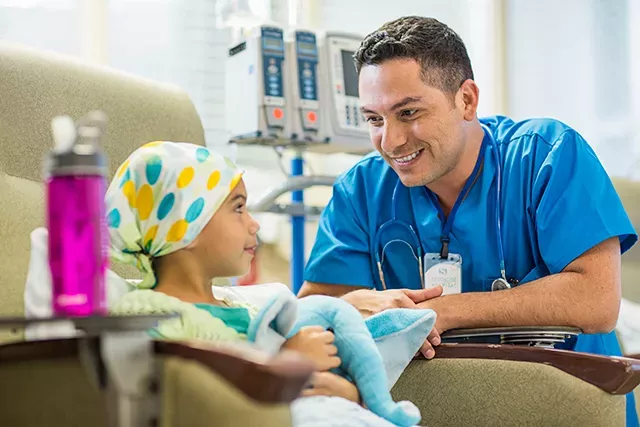Best pediatric/child cancer treatment in Aurangabad

-
Overview
Pediatric/child cancer is a form of cancer that primarily affects children and young adults. It is primarily caused by changes in the cells of the body that cause them to grow and divide in an uncontrolled way. Unlike adult cancers, which have many causes, the causes of pediatric cancer are largely unknown. Treatment for pediatric cancer typically involves a combination of chemotherapy, radiation therapy, and/or surgery. In addition, there are many supportive treatments available to help children cope with the side effects of their treatments. Pediatric cancer is the leading cause of death by disease in children under the age of 15 in the United States. It is estimated that more than 15,000 children and adolescents (ages 0-19) are diagnosed with cancer each year. Common types of pediatric cancer include leukemia, brain tumors, lymphoma, and bone tumors.
The Marathwada Cancer Hospital provides the best pediatric/child cancer treatment in Aurangabad. The hospital is equipped with advanced technology and the latest medical equipment. The hospital offers a wide range of cancer treatments, including chemotherapy, radiation therapy, and surgery. The hospital also provides care and support to families of pediatric cancer patients. The hospital has a team of experienced and dedicated doctors, nurses, and other medical professionals who are committed to providing the best possible care and treatment for pediatric cancer patients. Additionally, the hospital also offers counseling and support services to families of pediatric cancer patients.
-
Signals
- Unexplained weight loss : Weight loss can be a sign of cancer, especially if it is accompanied by other symptoms.
- Swelling or a lump in the belly : A lump in the abdomen can be a sign of a tumor, and swelling can be a sign of cancer that has spread.
- Bone or joint pain : Cancer that has spread to the bones can cause pain in the bones or joints.
- Unexplained pale skin : Pale skin can be a sign of anemia, which can be caused by cancer.
- Fatigue : Fatigue can be a sign of cancer, especially if it is accompanied by other symptoms.
- Fever : A fever can be a sign of an infection, which can be caused by cancer.
- Excessive bruising or bleeding : Excessive bruising or bleeding can be a sign of a blood disorder, which can be caused by cancer.
- Headaches : Headaches can be a sign of a tumor, especially if they are accompanied by other symptoms.
- Abdominal pain : Pain in the abdomen can be a sign of a tumor or an infection, both of which can be caused by cancer.
- Vision changes : Changes in vision can be a sign of a tumor in the eye, which can be caused by cancer.
-
Risk Factors
- Children with longer life expectancies have longer for cancer processes to appear, which increases the chance of various cancer forms later in life.
- In 5% to 15% of cases of pediatric cancer, genetic and family variables are found.
- Only 5% of cases include environmental exposure, such as exposure to smoke, X-rays, or specific drugs during pregnancy.
- However, the specific causes of the remaining 95% of cases are still unknown.
-
Progression
Various malignancies in children spread to various organs in their bodies. The testicles, the spinal cord, the kidneys, the ovaries, and other organs can all be impacted by leukemia. To the liver, bone marrow, or spleen, lymphoma can spread. Tumors in the brain may extend to the spinal cord. When rhabdomyosarcoma spreads, new lesions appear in the lung, bone, bone marrow, lymph nodes, and bone.
-
Diagnosis
Physical examination and blood testing for the initial diagnosis Advanced diagnosis options include lumbar puncture, computed tomography scan (CT or CAT), magnetic resonance imaging (MRI), and positron emission tomography (PET) scan in addition to biopsies, bone marrow aspirations, and biopsies.
-
A brief summary of the course of treatment
Surgery, radiation therapy, chemotherapy, and/or other forms of treatment are all possible forms of treatment. Many times, multiple ones of these therapies are applied. There is overwhelming evidence that the specialist care provided in these facilities results in noticeably better outcomes, hence treatment of pediatric cancer should always be carried out in a Children’s Cancer Centre under the supervision of a Pediatric Oncologist. A stem cell transplant can save a life in severe circumstances.
-
Milestones
Western India's largest Stem Cell Transplant facility Our 10-bed PICU is well-equipped to handle oncological emergencies and serves as a tertiary care referral center for other PICUs around Mumbai and the surrounding area. The youngest patient to receive a stem cell transplant in India was a six-month-old infant at Kokilaben Hospital. Monitoring for minimal residual disease (MRD) has changed the course of childhood leukaemia.
Top advice
You may take easy steps to lower your child’s risk of developing cancer.
- Avoid smoking.
- Give birth for longer.
- Get children to consume their fruits and vegetables.
- Regularly visit your pediatrician for medical checkups.
- Consume less sugar and salt.
- Avoid using pesticides or herbicides in your home.
- Don’t use antibiotics
